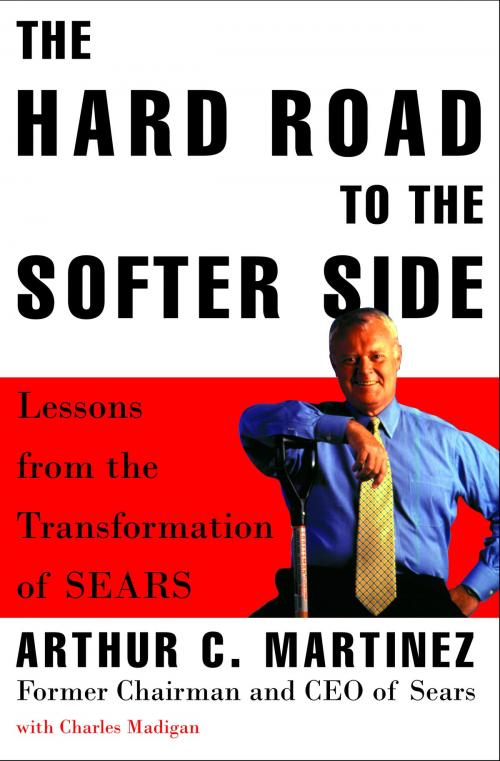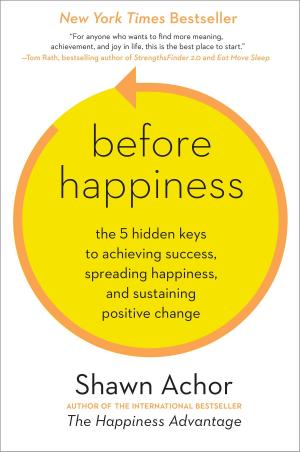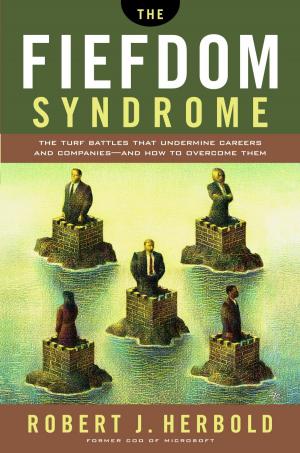The Hard Road to the Softer Side
Lessons from the Transformation of Sears
Business & Finance, Marketing & Sales, Retailing, Biography & Memoir, Business, Management & Leadership, Management| Author: | Arthur Martinez, Charles Madigan | ISBN: | 9781400045228 |
| Publisher: | The Crown Publishing Group | Publication: | October 30, 2001 |
| Imprint: | Crown Business | Language: | English |
| Author: | Arthur Martinez, Charles Madigan |
| ISBN: | 9781400045228 |
| Publisher: | The Crown Publishing Group |
| Publication: | October 30, 2001 |
| Imprint: | Crown Business |
| Language: | English |
For the better part of a century, Sears, Roebuck and Company touched the lives of almost everyone in America. A stunning tale of marketing and savvy, the company started selling watches and quickly became an essential source of goods for the American home. Sears brought the Christmas dreams of distant children to life; introduced the American homemaker to a collection of appliances that stripped much of the drudgery from daily living; and put solid, dependable tools in the hands of strong, eager men. At the same time, it forged a solid relationship with its customers, earning that most valuable business asset of them all: loyalty.
And then, when it could least afford to, Sears lost its way. It gradually forgot about its customers. It no longer understood (or cared) who its competitors were. It shifted its focus inward, to the interests and needs of its huge bureaucracy, all at the expense of the customers who found themselves in declining, dismal stores. The greatest retailer in world history had become a company with a great past, a disappointing present, and a dismal future.
The Hard Road to the Softer Side: Lessons from the Transformation of Sears is the story of how Sears recovered from this downfall, told by the visionary who built the team that forged the company’s rebirth. When Arthur Martinez took charge at Sears in 1992, he found a once-great company facing a loss of $4 billion, with a Soviet-style bureaucracy, little idea of its target customer, and an army of 300,000 disheartened employees. Many experts thought Sears was too far gone to save.
But save it Martinez did, putting Sears in the black by 1994 and sailing on through 1997. It wasn’t easy. Almost everything the company had become needed to change. Fifty thousand jobs disappeared. The Sears catalog, which had become so much a part of the company’s mythology, was put to rest. More than 100 stores were closed. But what rose from all of that turmoil was a new commitment to customers and a strategy that should have been apparent: in the American family, the mother is the chief financial officer.
With a boldness and determination backed by billions of dollars in renovations, Sears revived its connection to its customers and, at the same time, brought its own people back to life. The advertising sent the message, the sales staff opened its arms, and the customers came back. The new Sears was keeping its eye on the marketplace, its focus on the customer, and its interests firmly connected to the financial health of its shareholders. Then Sears hit the wall again with new aggressive competitors, a huge ethics problem, a war for talent, and a slowdown in sales.
The story of how Martinez and his team worked their way through not one but two crises is compelling and highly instructive, especially for anyone working in a company with an entrenched corporate culture or a long tradition that needs to be updated in order to stay competitive.
For the better part of a century, Sears, Roebuck and Company touched the lives of almost everyone in America. A stunning tale of marketing and savvy, the company started selling watches and quickly became an essential source of goods for the American home. Sears brought the Christmas dreams of distant children to life; introduced the American homemaker to a collection of appliances that stripped much of the drudgery from daily living; and put solid, dependable tools in the hands of strong, eager men. At the same time, it forged a solid relationship with its customers, earning that most valuable business asset of them all: loyalty.
And then, when it could least afford to, Sears lost its way. It gradually forgot about its customers. It no longer understood (or cared) who its competitors were. It shifted its focus inward, to the interests and needs of its huge bureaucracy, all at the expense of the customers who found themselves in declining, dismal stores. The greatest retailer in world history had become a company with a great past, a disappointing present, and a dismal future.
The Hard Road to the Softer Side: Lessons from the Transformation of Sears is the story of how Sears recovered from this downfall, told by the visionary who built the team that forged the company’s rebirth. When Arthur Martinez took charge at Sears in 1992, he found a once-great company facing a loss of $4 billion, with a Soviet-style bureaucracy, little idea of its target customer, and an army of 300,000 disheartened employees. Many experts thought Sears was too far gone to save.
But save it Martinez did, putting Sears in the black by 1994 and sailing on through 1997. It wasn’t easy. Almost everything the company had become needed to change. Fifty thousand jobs disappeared. The Sears catalog, which had become so much a part of the company’s mythology, was put to rest. More than 100 stores were closed. But what rose from all of that turmoil was a new commitment to customers and a strategy that should have been apparent: in the American family, the mother is the chief financial officer.
With a boldness and determination backed by billions of dollars in renovations, Sears revived its connection to its customers and, at the same time, brought its own people back to life. The advertising sent the message, the sales staff opened its arms, and the customers came back. The new Sears was keeping its eye on the marketplace, its focus on the customer, and its interests firmly connected to the financial health of its shareholders. Then Sears hit the wall again with new aggressive competitors, a huge ethics problem, a war for talent, and a slowdown in sales.
The story of how Martinez and his team worked their way through not one but two crises is compelling and highly instructive, especially for anyone working in a company with an entrenched corporate culture or a long tradition that needs to be updated in order to stay competitive.















